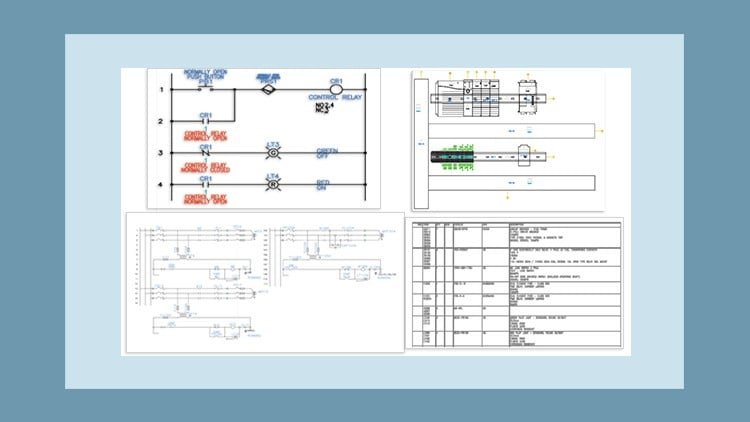If you’re looking to dive into the world of electrical design and automation with AutoCAD Electrical 2025, this course is an excellent choice for both beginners and those wanting to enhance their skills. “AutoCAD Electrical 2025: Tutorials, Exercises & Projects” on Udemy stands out with its structured approach, combining theory, practical exercises, and real-world projects to solidify your understanding. Let’s explore what this course offers in detail.
What you’ll learn
This course equips you with a comprehensive set of skills essential for electrical design. You’ll start by mastering the user interface and learning fundamental drawing techniques, which will pave the way for more advanced capabilities. Key learning areas include:
- Electrical Symbols and Schematics: Understand and create various electrical symbols and how to use them effectively in schematics.
- Panel Layouts: Learn how to develop panel layouts that meet industry standards and incorporate necessary components.
- Automating Design Tasks: Discover the tools available within AutoCAD Electrical to automate repetitive tasks and improve your workflow.
- Electrical Documentation: Gain skills in producing wiring diagrams, bill of materials (BOM), and other critical documentation necessary for electrical projects.
- Project Management: As you progress, you’ll learn how to manage electrical projects, ensuring they adhere to specified guidelines and timelines.
By the end of the course, you will feel confident in utilizing AutoCAD Electrical to create comprehensive electrical designs.
Requirements and course approach
Before diving into the course, it’s beneficial to have a basic understanding of AutoCAD or electrical engineering principles, though absolute beginners can also follow along with the provided resources. The course is designed in a user-friendly format, favoring a hands-on learning approach:
- Tutorials: Start with detailed video tutorials that break down complex concepts into digestible segments.
- Exercises: Throughout the course, practical exercises reinforce your learning, allowing you to apply the concepts directly.
- Projects: Real-world projects help you consolidate your skills through application, which is crucial for retaining what you’ve learned.
Additionally, the course encourages interaction, with opportunities for students to ask questions and engage in discussions, enhancing the learning experience.
Who this course is for
“AutoCAD Electrical 2025: Tutorials, Exercises & Projects” is tailored for a diverse audience:
- Beginners: Those new to electrical design or AutoCAD will find this course accessible, as it starts with the basics and gradually builds up to more complex lessons.
- Intermediate Users: Individuals who have some knowledge of AutoCAD but wish to specialize in electrical design will benefit greatly from the insights and techniques shared throughout the course.
- Industry Professionals: Electrical engineers, designers, and technicians looking to update their skills or transition into using AutoCAD Electrical will find the course’s depth and practical focus particularly valuable.
Overall, if you’re aiming to enhance your abilities in electrical design, this course will serve as a solid foundation.
Outcomes and final thoughts
Upon completing this course, you’ll walk away with a robust set of skills that will elevate your proficiency in AutoCAD Electrical. The combination of theory, hands-on exercises, and projects ensures you not only learn but also apply your knowledge in practical scenarios.
The course material is well-structured and approachable, making it suitable for both beginners and those looking to refresh their skills. With a supportive community and ongoing access to resources, you can continue your learning journey beyond the course.
In conclusion, “AutoCAD Electrical 2025: Tutorials, Exercises & Projects” is a worthwhile investment for anyone serious about advancing their electrical design capabilities. Whether you are starting from scratch or seeking to build on existing knowledge, this course is packed with the tools and techniques you’ll need to succeed in the competitive field of electrical engineering.





